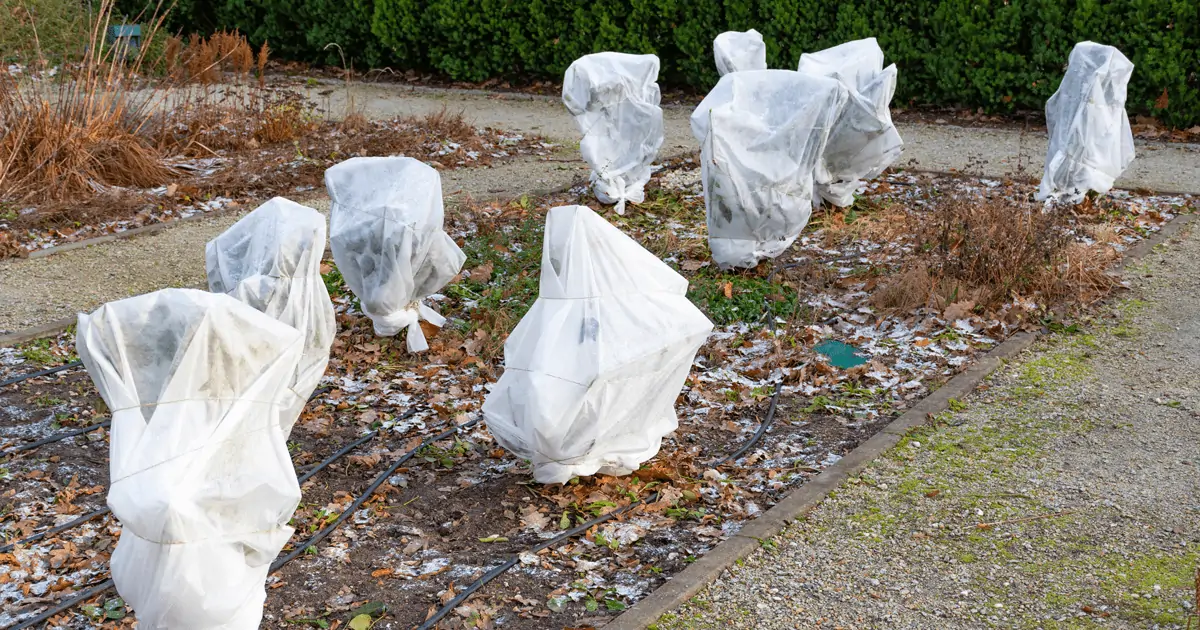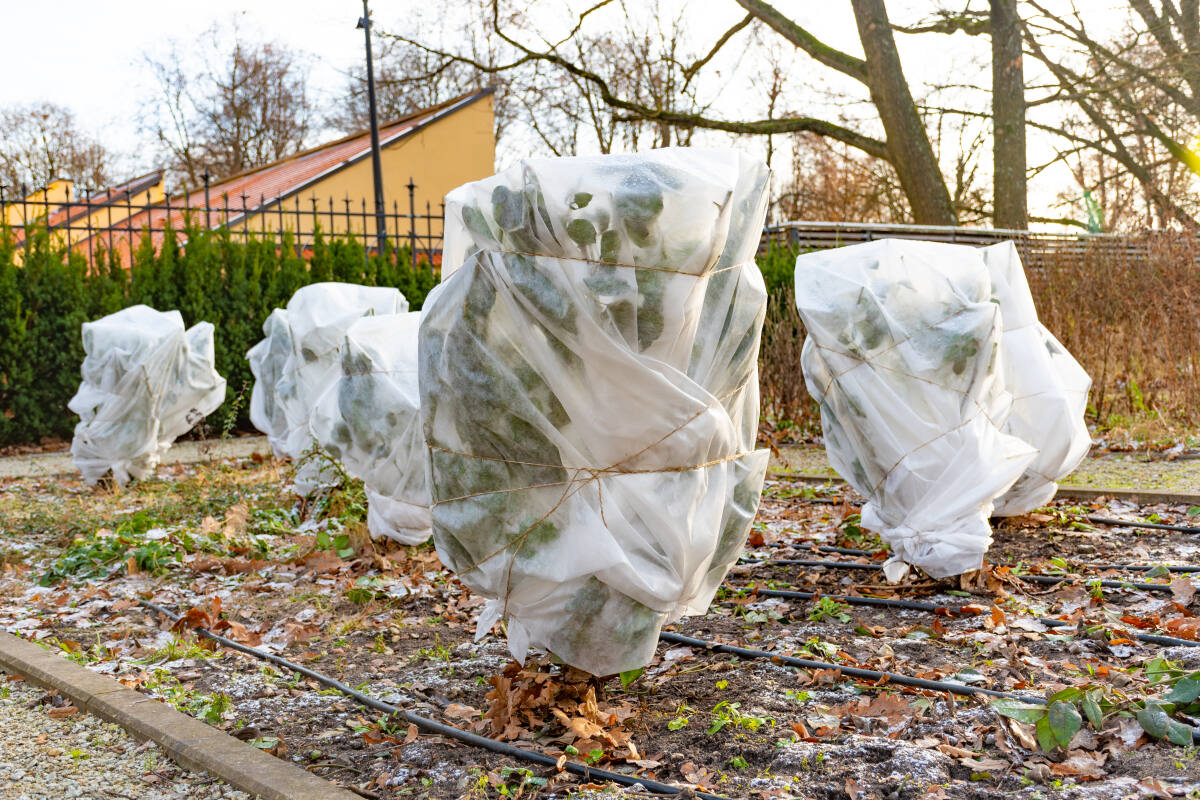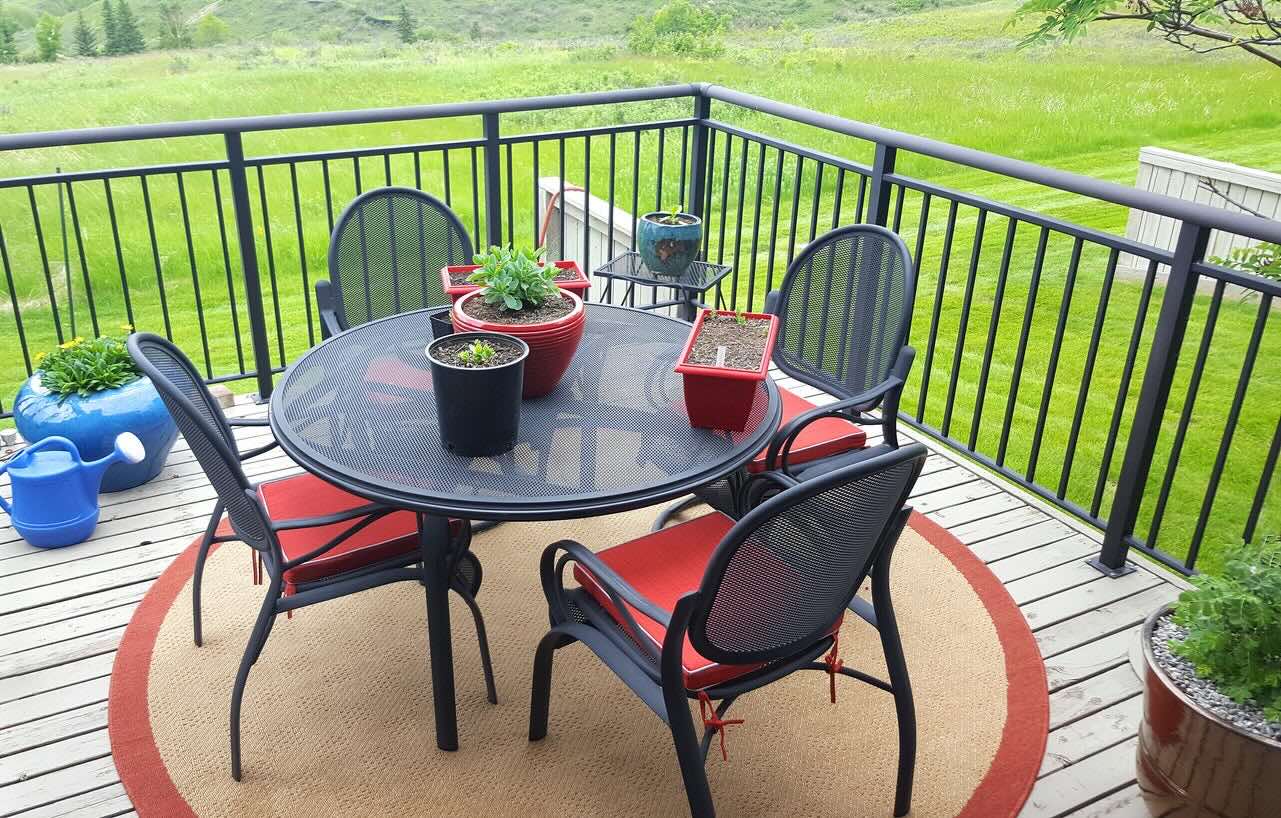Home>Furniture & Design>Outdoor Furniture>How To Protect Outdoor Plants From Frost


Outdoor Furniture
How To Protect Outdoor Plants From Frost
Modified: January 26, 2024
Learn how to protect your outdoor plants from frost with our expert tips and advice. Keep your outdoor furniture safe with our comprehensive guide. Protect your garden from the cold!
(Many of the links in this article redirect to a specific reviewed product. Your purchase of these products through affiliate links helps to generate commission for Storables.com, at no extra cost. Learn more)
Introduction
When the crisp air of autumn gives way to the chill of winter, outdoor plants face the peril of frost. For garden enthusiasts and nature lovers, protecting these green companions from the harsh effects of frost is a top priority. In this comprehensive guide, we will delve into the art of safeguarding outdoor plants from frost, ensuring that your garden remains a vibrant oasis even in the coldest of seasons.
The delicate beauty of flowers, the lush foliage of shrubs, and the stately presence of trees all stand vulnerable to the icy touch of frost. However, with the right knowledge and strategies, it is possible to shield these natural wonders from harm. From understanding the science behind frost to selecting frost-tolerant plants and implementing effective protection methods, this guide will equip you with the essential tools to safeguard your outdoor plants and nurture a thriving garden throughout the winter months.
Join us on this journey of exploration and discovery as we unravel the secrets of protecting outdoor plants from frost. Whether you are a seasoned gardener or a novice enthusiast, the insights and tips shared in this guide will empower you to create a sanctuary for your beloved plants, ensuring they emerge from the frosty embrace of winter unscathed and ready to bloom anew in the warmth of spring.
Key Takeaways:
- Protecting outdoor plants from frost involves understanding frost dynamics, choosing frost-tolerant plants, and monitoring weather conditions to create a resilient garden that thrives in winter.
- Providing strategic shelter, using frost protection methods, and nurturing a harmonious bond with nature are essential for safeguarding outdoor plants from the icy challenges of winter.
Read more: How To Protect Outdoor Plants From Freeze
Understanding Frost
Frost, the silent adversary of outdoor plants, occurs when the temperature of surfaces and vegetation drops below freezing, causing the formation of ice crystals. This natural phenomenon poses a significant threat to the tender tissues of plants, potentially leading to cellular damage and wilting. Understanding the dynamics of frost is crucial for devising effective protection strategies.
Several factors contribute to the occurrence of frost, including radiational cooling, clear skies, calm winds, and low-lying areas where cold air tends to settle. As the heat absorbed by the earth during the day is radiated back into the atmosphere at night, surfaces cool rapidly, creating the ideal conditions for frost formation.
It is important to distinguish between two primary types of frost: radiation frost and advection frost. Radiation frost, also known as hoarfrost, develops under clear, calm conditions, with the ground and plant surfaces losing heat through radiation. On the other hand, advection frost occurs when cold air moves over plants, causing the temperature to drop and resulting in frost formation.
Recognizing the signs of impending frost is essential for taking timely protective measures. Monitoring weather forecasts, particularly during the transitional seasons of autumn and spring, can provide valuable insights into the likelihood of frost. Additionally, paying attention to visual cues such as the formation of dew and the lowering of nighttime temperatures can serve as early indicators of potential frost.
By gaining a deeper understanding of the intricacies of frost formation and its impact on plants, you can effectively anticipate and mitigate the risks posed by this natural phenomenon. Armed with this knowledge, you will be better prepared to select suitable plants, monitor weather conditions, and implement protective measures to safeguard your outdoor greenery from the perils of frost.
Choosing Frost-Tolerant Plants
When creating a resilient garden that can withstand the challenges of frost, the selection of frost-tolerant plants is a pivotal consideration. These hardy plant varieties exhibit a remarkable ability to endure and even thrive in cold temperatures, making them invaluable additions to any winter garden landscape.
One of the key factors to consider when choosing frost-tolerant plants is their native habitat. Plants that originate from regions with cold climates, such as coniferous forests or alpine areas, often possess natural adaptations that enable them to withstand frost. Examples of such resilient species include various types of evergreen trees and shrubs, as well as cold-hardy perennials like hellebores, snowdrops, and winter aconites.
Another essential consideration is the plant’s hardiness zone, which indicates the climatic conditions in which a particular plant is likely to thrive. By selecting plants that are well-suited to the hardiness zone of your region, you can ensure that they have the inherent resilience needed to withstand frost and other environmental stressors.
Furthermore, the structure and characteristics of the plants can offer valuable insights into their frost tolerance. For instance, plants with small, thick leaves or needle-like foliage are often better equipped to resist frost damage compared to those with large, tender leaves. Additionally, certain plant species exhibit the ability to undergo a process known as cold acclimation, wherein they adapt to lower temperatures by enhancing their cold tolerance through physiological changes.
When designing a garden that can brave the frosty embrace of winter, it is advisable to incorporate a diverse array of frost-tolerant plants, including evergreens, ornamental grasses, and cold-hardy flowering perennials. By carefully selecting plants that are well-suited to the local climate and possess natural adaptations for cold resistance, you can establish a resilient garden that flourishes even in the face of frosty challenges.
Monitoring Weather Conditions
Keeping a vigilant eye on weather conditions is paramount when safeguarding outdoor plants from the potential ravages of frost. By staying attuned to meteorological forecasts and observing environmental cues, you can proactively prepare for and respond to impending frost events, ensuring the protection of your cherished greenery.
One of the fundamental tools for monitoring weather conditions is a reliable weather forecast. Regularly checking local forecasts, especially during the transitional seasons of autumn and spring, provides crucial insights into the likelihood of frost. Paying attention to predicted temperature lows, wind patterns, and the likelihood of clear skies can help you anticipate and prepare for frost occurrences.
In addition to formal weather forecasts, nature itself offers valuable indicators of impending frost. Observing the behavior of animals, such as the movements of birds and the shelter-seeking behaviors of small mammals, can offer subtle clues about changes in weather patterns. Furthermore, the formation of dew on surfaces during the evening can signal the potential for frost, serving as a natural barometer for impending cold temperatures.
Investing in a reliable outdoor thermometer can empower you to monitor temperature fluctuations with precision. By strategically placing thermometers in different areas of your garden, particularly in low-lying or frost-prone zones, you can gain real-time insights into temperature variations and take proactive measures to protect vulnerable plants when the mercury begins to plummet.
For those with a penchant for technology, numerous weather monitoring devices and apps are available, offering advanced features such as real-time temperature alerts and personalized frost risk assessments based on local microclimates. Embracing these technological innovations can provide an added layer of protection for your outdoor plants, allowing you to respond swiftly to changing weather conditions.
By combining the insights gleaned from formal weather forecasts, nature’s subtle indicators, and advanced monitoring tools, you can effectively stay ahead of frost events and implement timely protective measures to safeguard your garden. With a watchful eye and a proactive approach to weather monitoring, you can nurture a thriving outdoor oasis that remains resilient in the face of frosty challenges.
Covering outdoor plants with a breathable fabric, such as burlap or frost cloth, can help protect them from frost. Make sure to secure the fabric to the ground to trap heat and prevent cold air from reaching the plants.
Providing Shelter for Plants
Creating sheltered environments for outdoor plants is a strategic approach to shield them from the adverse effects of frost. By leveraging natural features and introducing protective structures, you can create microclimates within your garden that offer respite from the icy grasp of winter, safeguarding your cherished plants and preserving their vitality.
Strategic placement of plants in sheltered areas can significantly mitigate the impact of frost. South-facing locations receive more sunlight and warmth, making them ideal for positioning frost-sensitive plants. Additionally, proximity to walls, fences, or other structures can provide a protective barrier against cold winds, reducing the risk of frost damage.
Introducing natural windbreaks, such as hedges or densely planted shrubs, can serve as effective barriers against chilling winds that exacerbate the effects of frost. These natural windbreaks not only shield plants from harsh winds but also create pockets of still air, which can help maintain slightly higher temperatures and reduce the risk of frost formation.
For potted plants and delicate specimens, relocating them to sheltered areas, such as enclosed patios or unheated greenhouses, can offer enhanced protection from frost. These sheltered spaces provide a degree of insulation against extreme cold, creating a conducive environment for plants to weather the winter without succumbing to frost damage.
Introducing protective coverings, such as frost cloths, burlap, or specialized plant blankets, can offer an additional layer of defense against frost. These coverings act as insulating barriers, trapping heat radiated from the ground and preventing rapid temperature fluctuations that can harm plants. When using coverings, ensure they are securely anchored to prevent them from being dislodged by winds.
Implementing mulching practices around the base of plants can contribute to their resilience against frost. A layer of organic mulch, such as straw or shredded leaves, helps regulate soil temperature, insulate roots, and reduce moisture loss, thereby enhancing the plant’s ability to withstand freezing temperatures.
By providing strategic shelter for your outdoor plants through thoughtful placement, natural windbreaks, protective coverings, and insulating mulch, you can create resilient microclimates within your garden that offer vital protection against the perils of frost. These proactive measures not only safeguard your plants but also nurture a thriving garden that flourishes even in the face of wintry challenges.
Read more: How To Protect Grass Seed From Frost
Using Frost Protection Methods
Employing effective frost protection methods is instrumental in safeguarding outdoor plants from the potentially devastating effects of icy temperatures. By leveraging a diverse array of proven techniques and innovative strategies, you can fortify your garden against frost, ensuring the continued health and vitality of your cherished green companions.
One of the most widely utilized methods for protecting plants from frost is the application of water. Spraying plants with water before the onset of frost creates a protective barrier of ice around them, insulating the foliage and preventing the tissues from reaching damagingly low temperatures. This technique is particularly effective for sensitive plants and ornamentals.
Introducing supplemental heat sources, such as outdoor heaters, heat lamps, or even carefully positioned candles, can provide localized warmth and prevent frost formation in specific areas of the garden. When using heat sources, exercise caution to ensure they are safely positioned and do not pose a fire hazard.
Utilizing row covers, also known as frost cloths or floating row covers, offers an effective means of shielding plants from frost while allowing light, air, and moisture to permeate. These lightweight, breathable fabrics can be draped over plants or suspended on frames to create protective enclosures that mitigate the impact of frost.
Implementing the practice of cold frame gardening presents an innovative approach to protecting plants from frost. Cold frames, which are essentially miniature greenhouses, provide a sheltered environment for tender plants, offering insulation and protection from harsh winter conditions. These structures can be utilized to extend the growing season and shield delicate plants from frost.
Introducing thermal mass elements, such as rocks or containers filled with water, within the garden landscape can help moderate temperature fluctuations and provide a source of stored heat. These thermal mass elements absorb and release heat, contributing to the creation of microclimates that buffer plants against the effects of frost.
Employing a combination of frost protection methods tailored to the specific needs of your garden can yield comprehensive protection against frost and ensure the well-being of your outdoor plants. By embracing these innovative techniques and time-tested strategies, you can nurture a resilient garden that thrives amidst the challenges of winter, emerging unscathed from the icy grip of frost.
Conclusion
As winter casts its icy veil over the landscape, the art of protecting outdoor plants from frost emerges as a vital undertaking for garden enthusiasts and nature aficionados. By delving into the nuances of frost dynamics, selecting frost-tolerant plants, monitoring weather conditions, providing strategic shelter, and employing effective protection methods, you can nurture a resilient garden that thrives even in the face of wintry challenges.
Understanding the science of frost and its impact on plants empowers you to anticipate and mitigate the risks posed by this natural phenomenon. By choosing frost-tolerant plants that are well-suited to your local climate and possess innate adaptations for cold resistance, you lay the foundation for a garden that can weather the cold with grace.
Vigilantly monitoring weather conditions, both through formal forecasts and the subtle cues of nature, allows you to stay ahead of frost events and implement timely protective measures. By creating sheltered environments, introducing protective coverings, and leveraging innovative techniques such as cold frame gardening, you can fortify your garden against the chilling embrace of winter.
As you embark on this journey of protecting outdoor plants from frost, remember that each plant is a living testament to resilience and natural beauty. By nurturing and safeguarding these green companions, you forge a harmonious bond with nature and cultivate a sanctuary of life amidst the frosty landscape.
May the insights and strategies shared in this guide serve as beacons of guidance as you embark on the mission of protecting your outdoor plants from frost. With a blend of knowledge, innovation, and tender care, you can cultivate a garden that remains vibrant and flourishing, transcending the icy challenges of winter to herald the arrival of a new season of growth and renewal.
Frequently Asked Questions about How To Protect Outdoor Plants From Frost
Was this page helpful?
At Storables.com, we guarantee accurate and reliable information. Our content, validated by Expert Board Contributors, is crafted following stringent Editorial Policies. We're committed to providing you with well-researched, expert-backed insights for all your informational needs.















0 thoughts on “How To Protect Outdoor Plants From Frost”